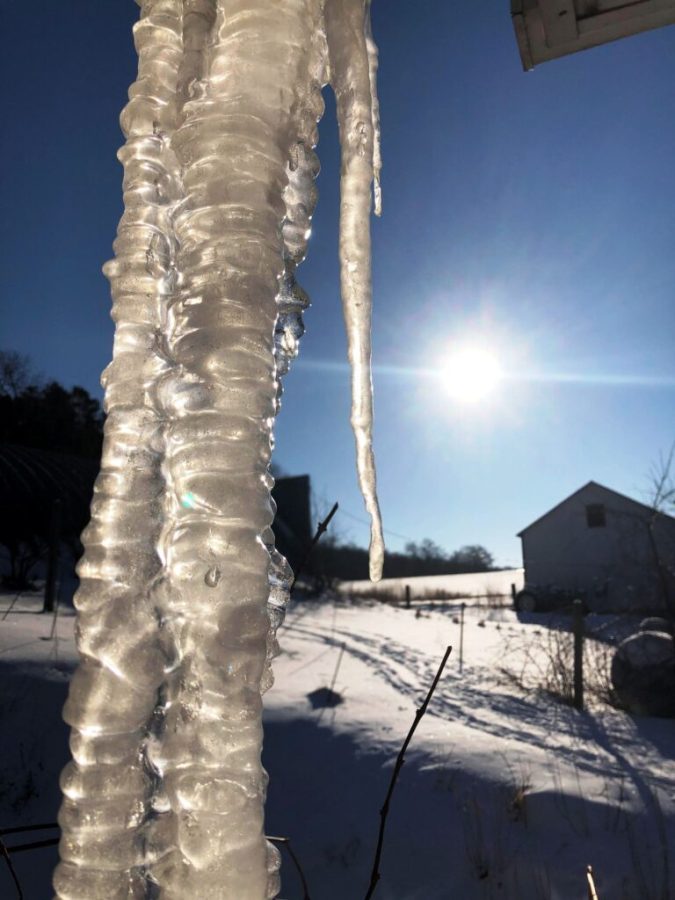Appreciating the science and beauty of icicles
This icicle was created by a dripping rain gutter outside Chris Hardie’s back door.
March 6, 2022
There are marvels all over the world, but sometimes one need only look out your back door to find new ones.
In my case, it is literally outside my back door where a section of rain gutter was dislodged sometime over the winter. The dripping spout from the freezing and thawing of snow melting from the roof creates icicles. Recently, I watched over a period of a few days as a large chunk of ice developed and grew.
Now, you’re probably thinking, what’s the big deal about icicles? After all, we live in a part of the world where they are pretty commonplace, dangling off eaves and gutters of sheds, garages, barns or poorly insulated homes and buildings.
It turns out that they are a pretty big deal, as icicles rarely occur in nature with the exception of areas in cooler climates around waterfalls or during severe ice storms. But the exact science behind what determines their shape is not fully understood.
Full confession: I do have a B.S. degree from UW-La Crosse. While some may believe those letters stand for something else that I have often shoveled, in this instance it is a bachelor of science.

The reality is the most advanced science class I took in college was biology. I did take chemistry and physics in high school, albeit at the strong encouragement of my late engineer-trained father. Dad was a big fan of physics because he said it helped explain the relationship between science and nature.
There has been a great deal of scientific research done on icicles. They are formed during subfreezing weather when ice or snow melted by sunlight or another heat source (such as heat escaping from a building) refreezes as it drips.
The physics department at the University of Toronto is one of the premier sources for icicle research with its online Icicle Atlas. The atlas is a collection of images, time-lapse movies, files and data on 237 lab-grown icicles made between 2008 and 2012.
The long and pointy form of icicles is created because of the air around them. When the dripping water freezes, it releases warm air, which rises and forms a blanket around the icicle. The tip is colder than the base, keeping the top from growing and the wet tip freezes and grows.
It’s the impurities in water — such as salt — that create the ripples or ridges in the icicles.
So, here’s where the math comes in. In 2005 — according to Livescience.com — researchers determined stalactites that hang from the ceilings of caves have a distinctive shape that is described by a mathematical equation.
And even though stalactites are formed by the diffusion of carbon dioxide gas and not by conduction, the same math applies. I would share the math if I understood it, but sadly my college trigonometry and calculus lessons are a distant memory. Not to mention that I barely passed the five-credit class with a D.
I may not understand it, but I can appreciate it. It’s a blend of nature, physics and math that creates beauty.
I’ll appreciate it even more when the weather warms and our icicle days are behind us for another year.
Chris Hardie spent more than 30 years as a reporter, editor and publisher. He was nominated for a Pulitzer Prize and won dozens of state and national journalism awards. He is a former president of the Wisconsin Newspaper Association. Contact him at [email protected].













